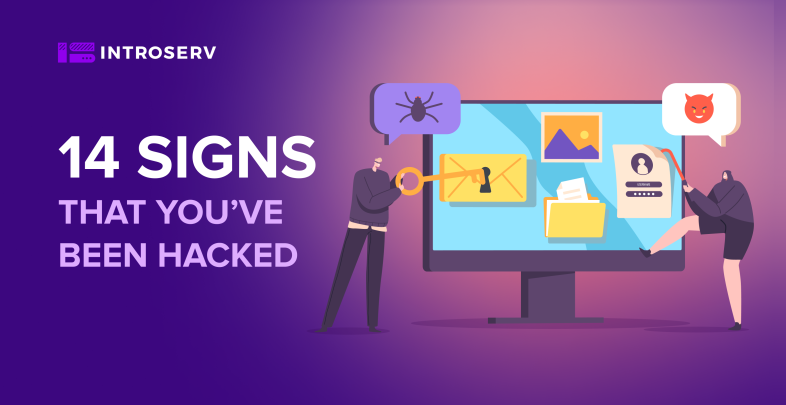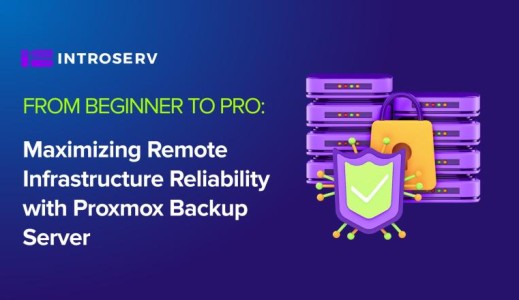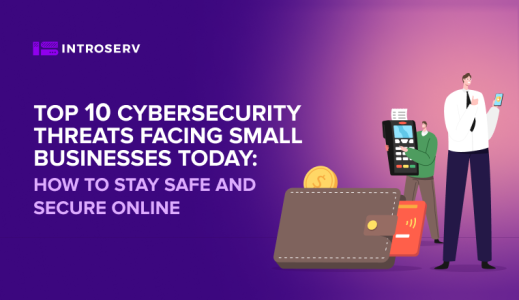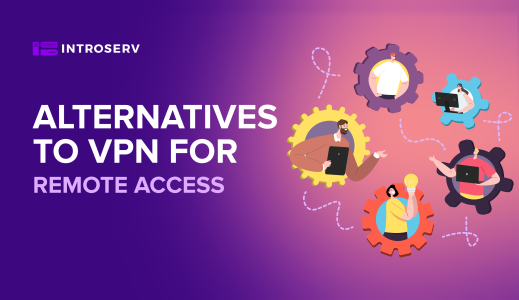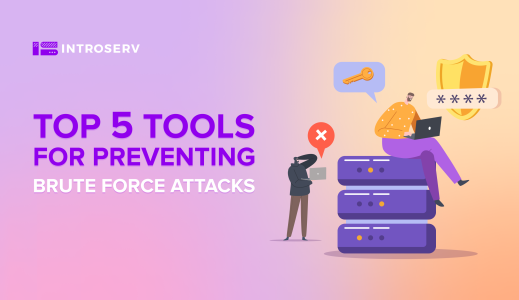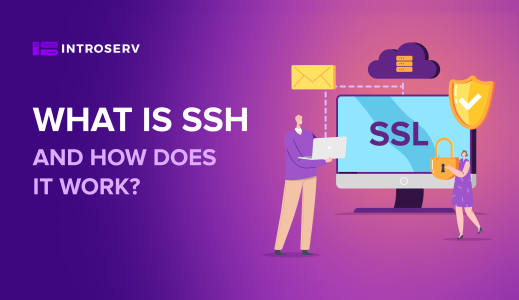In today's advanced world, it is crucial to understand the shattering impact of cyber intrusion, on individuals and businesses. Intruders exploit vulnerabilities in systems to gain access to sensitive information and cause destruction or other malicious acts.
Cybersecurity is the art of protecting computer systems, networks, and personal data from illegal access, theft, or damage. It is an essential component for individuals and businesses to shield their confidentiality from hackers. Digital protection comprises various measures such as firewalls, anti-malware software, two-factor authentication, and frequent software updates to prohibit unauthorized access to systems.
Statistics show that network breaches are increasingly bursting, affecting millions of people each year. The Hiscox Cyber Readiness Report 2022 discloses that a single internet attack is estimated to have cost companies in the U.S. a median of $18,000 in 2022. That's not all! The IBM/Ponemon Institute report reveals that the average total cost of data breaches in 2022 was a whopping $4.35 million! This is a massive increase from the previous years and emphasizes the dire need for businesses to take digital security seriously.
Cybercriminals use a range of bursty tactics such as phishing, social engineering, malware, and outdated software to exploit the bursting vulnerabilities in systems.
The purpose of this article is to provide a comprehensive guide on what to do if you get hacked. Being cyber-attacked can be an overwhelmingly perplexing and daunting experience, but immediate action can mitigate the damage. We will provide tips on what to do if you're hacked and how to prevent future intrusions.
Typical Mistakes Why People Get Hacked
One of the main causes of cyber intrusion is a lack of knowledge about digital security. Many people are not well-versed in online protection practices, making them easy targets for hackers.
This is further compounded by outdated software. Such software may have vulnerabilities that intruders are able to exploit and gain access to the system.
Another contributing factor is the oversharing of personal information online. Data shared on social media platforms can be used by malicious attackers to gain entry to profiles.
Public Wi-Fi networks are also a major concern, as they are often unsecured and crackers can easily intercept sensitive details.
Neglecting to install and maintain anti-malware software is yet another common reason for experiencing digital breaches. Malware is able to infect devices and steal confidentiality without the user's knowledge.
Lastly, reusing passwords across multiple profiles can also leave people vulnerable to information intrusions. If a cybercriminal gains access to one account with a reused login, they may potentially be able to enter other profiles.
By understanding these common mistakes for being hacked, you are able to take steps to protect yourself and your private details. It is essential to prioritize cybersecurity to prevent potential digital threats and keep your data safe.
How Hackers Attack: Common Methods and Tactics
Cybercriminals are becoming increasingly sophisticated in their methods of hacking, and it is essential to understand the various ways in which they can breach your personal and sensitive information.
One of the most pervasive ways intruders are able to gain entry to your data is through phishing scams. These scams often take the form of emails or messages that appear to be from a trusted source but are designed to trick you into revealing your confidential details or login credentials.
Another common vulnerability is weak passwords. Malicious attackers have the ability to use specialized software to crack simple and common passcodes, granting them admission to your profiles.
Unsecured networks are also a major concern. Public Wi-Fi networks, for instance, are easy targets for crackers, who have the potential to intercept your online traffic and gain access to your intelligence.
Malware attacks are another prevalent way hackers might exploit your system. Spyware can be installed on your computer or smartphone through downloads, attachments, or links. Once installed, hackers have the capacity to use it to gain entrance to users' files, passwords, and other classified data.
Social engineering is yet another tactic that crackers use to gain availability to personal details. They are able to manipulate people into giving away their confidential data or logins through emails, phone calls, or even in person. Cybercriminals can pretend to be a trusted source, such as a bank or government agency, and trick you into giving away your information.
An additional approach to how intruders can break into your system is by exploiting security weaknesses in your software. For example, if you have an old version of a web browser installed, it may possess vulnerabilities that are able to be easily exploited against you. This illustrates the paramount importance of keeping software up to date to stay ahead of digital security threats.
Physical access to a device can also pave the way for a digital intrusion. If a perpetrator is able to gain physical entry to your computer or smartphone, the potential for them to install malware or directly access your sensitive data is very high. Thus, protecting physical devices is a prerequisite for information security.
What can hackers do after a break-in?
When an attacker gains entry to your device, they have the ability to cause a lot of damage. Here are some of the things that a hacker could do if they successfully breach your system:
- Access confidential data: Cybercriminals can take personal information, such as your name, address, phone number, email, and even your social security number. This intelligence could be used to steal your identity, open fraudulent profiles, or even gain access to your financial logins.
- Steal your money: Intruders can use your financial details, such as your credit card or bank account data, to make unauthorized purchases or transfers. They could also use your identity to apply for loans or credit cards, leaving you responsible for the debts they create. In extreme cases, attackers might even take over your entire financial profile and drain your savings.
- Spread malware: Once a hacker invades your logins, they are able to use them to spread malware to other people in your contact list. This could cause a ripple effect and lead to many more people experiencing a network disruption.
- Spy on you: Hackers are capable of planting keyloggers or other spyware on your computer, enabling them to track your keystrokes and monitor your activity. This could be particularly dangerous if you use your computer for online banking or other sensitive transactions. They can even use your webcam or microphone to spy on you and record your conversations.
- Conduct illegal activities: Your devices may be used to carry out illegal activities, such as spreading hate speech, committing fraud, or distributing illegal content. This could put you in a very difficult position, as you could be held responsible for the actions of the intruder.
- Sell your information on the dark web: Hackers can sell your data on the dark web to other criminals. This information could then be used for identity theft, fraud, and other criminal activities.
- Ransomware attacks: You may encounter ransomware that locks your computer and demands payment in exchange for restoring access. This could be very costly and could cause a lot of stress and anxiety.
As you can see, cyber hacking is a serious issue and could lead to many problems. It is important to have digital security measures in place to protect yourself from intruders, and to be vigilant about the computer security of your devices and logins.
14 Signs That You've Been Hacked
Unfortunately, there's always a risk of cyber attacks. But how can you find out if someone has gained unauthorized access to your profiles or confidential data? Now we'll look at the most common signs that may indicate that you've been hacked.
1. Unexplained charges on your accounts are one of the most obvious indications that your profile has been hijacked. It's time to look into any strange transactions you notice on your credit card account or bank statement.
2. Pop-ups and suspicious ads: If you frequently see pop-ups and dubious advertisements when browsing, you may have been compromised. These ads can link to phishing websites that try to steal your personal information or include malware.
3. Slow computer performance or crashes: If your computer is running much slower than usual or freezes frequently, it could be a consequence of the device being infected with malware and other types of viruses.
4. Changed passwords or profile information: Receiving an email from a service provider that your password has been changed without your involvement is an indication that someone else has entry to your account.
5. Unusual activity in your profile: If you notice unusual entrances in your profile, such as logins from unfamiliar devices or IP addresses, it means that someone else has access to your profile.
6. Disabled antivirus could be a sign that someone has taken control of your device and disabled the software to avoid detection.
7. Unexpected software installations: If you notice new software on your device that you don't remember installing, it could be a symptom that you have been hacked and have malware installed.
8. Online searches are redirected: If your online searches are being redirected to unfamiliar websites, it's a sign that malware already has infected your device.
9. Unexplained changes to your files or settings are a clue that someone else has access to your device and has received all the necessary permissions to make changes.
10. An unresponsive mouse or keyboard: If your mouse or keyboard becomes unresponsive, it could mean that someone has taken control of your device remotely.
11. A blue screen of death: It's a warning that your device has encountered a serious error. While it doesn't necessarily mean that you've been attacked, it's worth investigating.
12. Webcam or microphone turns on unexpectedly: If your webcam or microphone turns on unexpectedly, it could be a clear indicator that someone is monitoring your activity without your knowledge.
13. Your friends report weird messages: If your friends or contacts receive strange texts from you, it’s likely that someone has entered your profile and is sending emails on your behalf.
14. You get a ransomware message, fake antivirus message, or unwanted browser toolbars:
Any of these notifications indicate that you have been compromised. False antivirus warnings could fool you into installing malware, while ransomware can lock your files and demand payment to decrypt them. In conclusion, if you notice any of these signs, it's important to take immediate action to protect your details and devices. By staying vigilant and taking proactive measures to prevent cybercriminal attempts, you can help keep your information safe and secure.
What To Do At First?
If you suspect that your digital security has been breached, it's crucial to take swift action to minimize the damage. Prompt action can help prevent malicious attackers from carrying out further cyber intrusion into your system or pilfering confidential details.
Here are some essential initial steps you should take if you have been hacked:
1. Disconnect from the internet: Shut down your device from the online network to prevent any further unlawful access.
2. Enter safe mode: Reboot your device in safe mode. This will stop any malware from running and potentially exploit your system further.
3. Modify your passwords: Change your logins for all your profiles immediately. Use strong, unique passwords, and enable two-factor authentication to enhance security.
4. Freeze your bank account and block jeopardized logins: Get in touch with your bank and other financial institutions to lock down your credit and block any compromised profiles. This will thwart hackers from stealing your money or making unauthorized purchases.
5. Activate multi-factor authentication: Enable two-factor authentication on all your profiles. This will provide an extra passage security layer to your accounts and make it more challenging for malicious attackers to enter.
6. Use antivirus: Run an anti-malware scan on your device to detect any malicious software hiding on your system. The antivirus will notify you and remove the threat if it finds any suspicious files or programs.
7. Check network traffic: Use tools such as Wireshark to track your digital traffic and identify any unusual patterns. For instance, a sudden increase in traffic to a certain website or IP address could indicate that your computer has malware on it or that someone is trying to get into it. With Wireshark, you may identify the source of activity and take the necessary precautions to safeguard your system.
8. Monitor system activity: Keep an eye on your system activity to detect any unusual processes or activities. You can use tools like Task Manager (Windows) or Activity Monitor (Mac) to monitor your system activity.
9. Restore the system to a previous point: If you have a system restore point, consider restoring your system to a previous point before the cyber intrusion occurred.
10. Follow instructions from tech support or service providers: If you're still encountering issues, seek advice from tech support or service providers for further assistance.
Bear in mind that taking immediate action is critical if you've been cyber-attacked. The more you delay, the more harm hackers can cause to your system and steal intelligence.
Whom to Contact After a Hacking Incident?
One more of the critical steps to take is to reach out to the right people or organizations that can offer the necessary assistance. Below are some of the key entities you may need to contact:
- Your financial institution or credit card company: If you spot any suspicious activities or unauthorized transactions on your profiles, it's essential to contact your financial institution or credit card company right away to block the compromised logins and prevent any further fraudulent activity.
- Your service provider and tech support for business accounts: If you're using a business profile, notify your service provider and tech support team as soon as possible to inform them of the situation and forestall further damage.
- The company that provides your antivirus software: If you have an antivirus installed on your device, get in touch with the company's customer support team to report the issue and seek their guidance on how to remove any malware or viruses from your system.
- Your email provider: If your email entrance has been hacked, it's essential to contact your email provider to report the incident and take steps to secure your account.
- The police (in the case of identity theft): If you suspect that your personal information has been stolen and could be used for identity theft, contact the police immediately to file a report.
- The Federal Trade Commission: The FTC is the federal agency responsible for protecting consumers from fraud and identity theft. If you have been intruded on, you can file a report with the federal agency to document the incident and receive guidance on how to protect yourself from further harm.
By contacting the right entities and organizations, you can obtain the necessary help to recover from a cyber intrusion and avert further exploitation.
How Won't Get Hacked Again?
Here are some key strategies to help you prevent future cyber intrusions:
- Utilize strong passwords: Using weak passwords is like leaving the front door of your house unlocked. Ensure you use unique and complex logins for all your profiles and avoid using the same entry across multiple accounts.
- Activate two-factor authentication: Multi-factor authentication can add an extra layer of digital security by requiring you to enter a unique code or biometric data, on top of your password, to access your profiles.
- Keep software and operating systems up-to-date: It's important to regularly update your software and operating systems to fix known vulnerabilities in computer security and prevent hackers from exploiting them.
- Be cautious when clicking on links or downloading unknown software: Avoid clicking on links or downloading software from untrusted sources or suspicious emails to prevent unauthorized access.
- Use anti-malware software and firewalls: Using reputable anti-virus software and firewalls can help protect your technological systems from malware.
- Educate yourself about common hacking tactics: Knowing about common intrusion tactics such as phishing scams and social engineering can help you recognize and avoid them.
- Regularly back up important data: Regularly backing up your important details can protect against data loss in the event of a digital attack or system failure.
- Use secure Wi-Fi connections: Avoid using public Wi-Fi networks or unsecured electronic connections that can be easily cracked.
- Implement security measures: Use security measures such as VPNs, password managers, and encryption technologies to protect your online activities and ensure your confidential information.
- Regularly monitor your accounts: Regularly monitoring your profiles and financial statements for any suspicious activity can help detect and prevent fraudulent activity.
By implementing these strategies and staying vigilant, you can significantly reduce your risk of getting cybercrime and protect your intelligence and online activities. Remember to stay proactive in your information security measures to avoid further cyber protection issues.
Conclusion
Hacking incidents can be incredibly unnerving, and taking prompt action is vital to limit the damage. Changing logins, disconnecting from the internet, and reaching out to relevant parties are some of the initial steps one can take to start the recovery process. But being proactive is key to minimizing the risk of future digital intrusions. Enabling two-factor authentication, regularly updating software, and utilizing anti-malware tools are just a few of the preventive measures individuals and businesses can take.
At INTROSERV, we believe that information security should not be taken lightly, and staying alert to cyber threats is a must. It's essential to equip yourself with knowledge of the most common hacking tactics and stay up to date with the latest digital security developments. Through a collective effort to combat cybercrime, we can create a safer virtual environment for everyone, making computer security a top priority.
